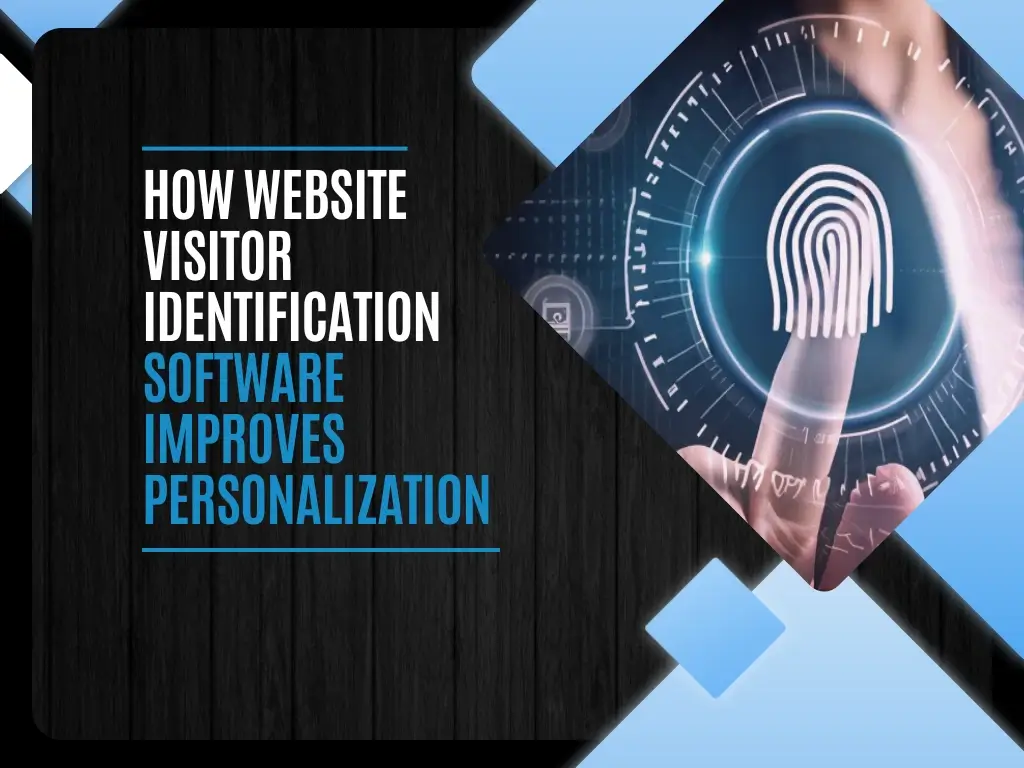How Website Visitor Identification Software Improves Personalization
Boost personalization with website visitor identification software, offering tailored experiences by understanding user behavior.

Today, companies strive to provide customized experiences for their customers. A crucial aspect of achieving this objective is utilizing visitor recognition software. This technology enables businesses to understand and evaluate website visitors’ actions, allowing them to customize content and offerings based on individual preferences. This article delves into how visitor recognition tools enhance personalization, resulting in increased customer interaction and satisfaction.
Exploring the Use of Visitor Identification Software
Website visitor identification software functions by monitoring and analyzing user engagement with websites. It gathers insights into visitor behavior patterns and preferences, as well as demographic information. By employing cookies and tracking methods—such as IP addresses—for anonymous visitors, businesses can create detailed user profiles. This capability allows companies to offer personalized experiences that uniquely cater to individual visitor needs.
Gaining Insights into Customer Preferences
Through visitor identification software, businesses can gain valuable insights into their target markets. By analyzing customer demographics and behaviors, companies can tailor marketing strategies more effectively based on audience segmentation and detailed analytics. This targeted approach not only improves content delivery but also enhances user satisfaction over time, leading to a more fulfilling customer experience.
Crafting Content to Suit Unique Requirements
Tailoring content to connect with audiences is essential for the success of personalization in marketing strategies today. Businesses leverage visitor recognition tools to deliver personalized content that aligns with individual preferences. By analyzing visitor actions and interests, companies can create content that adjusts to meet user needs. This personalized strategy fosters stronger bonds between businesses and their target audiences, resulting in heightened engagement and increased brand loyalty.
Improving Marketing Tactics
Businesses can enhance their marketing strategies by analyzing visitor behavior to identify the most effective channels and types of content for their audiences. Visitor identification software aids in tracking campaign performance, enabling organizations to allocate resources efficiently and make informed decisions based on data-driven insights. This approach often leads to increased conversion rates and a better return on investment, allowing businesses to optimize their marketing efforts continuously.
Enhancing Customer Interaction
Customer interaction flourishes when individuals receive tailored experiences from a company or brand. Utilizing identification technology allows businesses to engage customers more meaningfully by providing content and offerings relevant to their specific needs and preferences. Tailored suggestions and promotions not only enhance user satisfaction but also nurture lasting connections. This type of engagement cultivates loyalty towards the brand, encouraging return visits and elevating customer retention levels.
Improving the Customer Experience
Tools that assist businesses in identifying visitors also help track customer interactions on websites, thereby improving the overall user experience. By identifying pain points and optimizing navigation paths, companies can create a smoother browsing experience. This results in higher satisfaction levels, improved conversion rates, and lower bounce rates, making it easier for customers to find what they are looking for.
Data-Driven Decision Making
Successful personalization strategies rely heavily on data-driven decision-making as their foundation. Businesses utilize identification software to access up-to-date data, which empowers them to modify strategies and offerings in response to evolving customer preferences. By employing data analytics tools, companies can proactively anticipate trends, ensuring they remain relevant and competitive in the market.
Safeguarding Privacy and Adhering to Regulations
While personalization significantly enhances the user experience, prioritizing privacy protection is essential when using visitor identification software. Companies must ensure user data is kept safe and secure, adhering to data protection laws and regulations. Being transparent about data collection methods is vital to inform users about how their information is being utilized. Finding the right balance between personalization and privacy is crucial for building trust and ensuring users feel secure in their interactions with businesses.
Conclusion
Identifying visitors through recognition software greatly enhances customization for businesses, enabling them to understand visitor actions and preferences. This understanding allows companies to provide personalized experiences that resonate with their audience effectively. Improved insights into customer preferences and optimized navigation paths contribute to increased satisfaction and loyalty among customers. In today’s business environment, embracing visitor identification software is crucial for achieving success. Prioritizing privacy and data security ensures that personalization continues to build trust and foster enduring relationships with audiences. By investing in these technologies and practices, businesses can create a more engaging and fulfilling experience for their customers, ultimately driving growth and success in a competitive marketplace.



